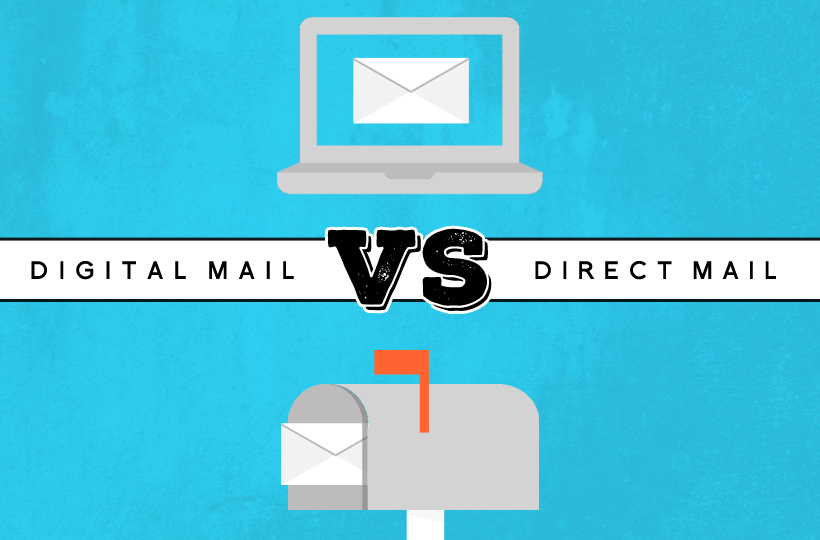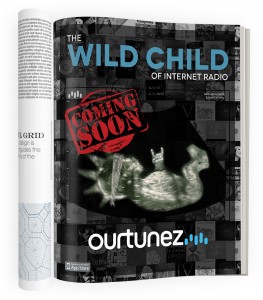Sending mail is a tried and true way to effectively reach your customers and communicate your advertising messages. There’s no doubt that every company’s marketing mix should include some form of mail. The question is, should that mail be physical or digital? Email and direct mail are both highly efficient, cost effective methods for finding new customers, making sales, up-selling current customers, and staying connected with existing customers. Ideally you’d want to use a mix of both, but if could only choose one method which one would be the best for your business? Let’s take a look at the pros and cons of each marketing tool.
Direct Mail
Pros
1) Direct Mail Is Perceived More Positively
Sure, people refer to direct mail as “junk mail,” but they use the term with a lot less resentment than “spam.” What’s worse is that email isn’t very well trusted. With increased technology comes increased concern for privacy. Due to hackers, and phishing scams people are continuing to place less trust in electronic communication. On the other hand, 56% of consumers find print marketing to be the most trustworthy type of marketing. There’s also a difference in the way each method is received. When you’re sorting through your email you’re scrolling through in somewhat of a hurried, less engaged manner. When you sort through your postal mail, chances are you’re much more relaxed and you have to view each message, regardless of your interest, to pick out the mail that’s actually relevant to you. This difference in receptivity is incalculably important.
2) Direct Mail Allows You To Tell The Whole Story
Unless you’re conducting door-to-door sales, you’re not going to get any closer to your prospects than direct mail. Your direct mail will be walked into the dining room and placed on the table with rest of the mail stack. As it’s sorted through and your piece is looked over you have the chance to give your personal sales pitch with the expertise that only you can deliver. If you write a compelling letter readers will follow along with you. However, if you write a letter via email it will not be read. It may not even be skimmed. When your prospects are reading their emails, there’s probably more than a dozen other things going on at the same time. They may be receiving notifications that 20 new emails were just delivered to their inbox, or they may have 5 new updates on Twitter that need to be checked. There’s a lot that could potentially distract your audience from reading your entire email.
3) Your Mailbox Isn’t Overloaded
But your inbox is. How many emails do you get a day? How many do you read a day? We could bet with absolute certainty that your answer to the first question is much higher than your answer to the second. The fact of the matter is that our inboxes are so overloaded that we receive more emails than we could possibly ever have the time to read. We receive personal communications, work updates, brand updates, news, offers, and so much more. Our inboxes are jam packed and what’s more is that many people don’t even bother to sort through their email on a daily basis. That means that your marketing message could potentially be sitting around at the bottom of the stack only to be removed in a mass Select All -> Delete inbox clean out.
What makes direct mail any better? For one, there isn’t as much competition for the mailbox as there is for the inbox. Moreover, most consumers actually sort through all of their mail. A study conducted by the U.S. Postal Service found that 98% of Americans check their mail on a daily basis. The chances your message will actually be seen is much better.
4) Direct Mail Is Incredibly Customizable
Sure you could just create a flyer and call it a day, but do you want to really wow your audience? There is so much you can do with direct mail to really stand out from your competition and grab your readers’ attention. Why not attach multiple pieces in your mail? You could send a testimonial sheet filled with raves, objective product reviews, stickers, or posters. You can send as much or as little as you like. Why not also play with the style of your envelope? You can choose from hundreds of different envelope colors and shapes to pique the curiosity of your prospects. For instance, during the Christmas season your customers are looking for red and green envelopes which tend to indicate Christmas cards from family. Those envelopes certainly won’t be thrown away without first being opened. With direct mail, there are several built-in cues (color being one of them) you can play upon to indicate that your mail piece is worth opening. Yet another cue is dimension and you can achieve this stimulus through a type of mail piece known as, “lumpy mail.” This is a three-dimensional mail piece that makes your prospects feel very special. On the flip side, with an email you get pixels on the screen and nothing more. Sure, you could add an attachment, but will your readers feel safe enough to open/download it?
Cons
1) Direct Mail Can Be Expensive
Postage isn’t exactly cheap and neither is printing. Not to mention the cost of creative development. There’s a lot that goes into a direct mail campaign and while it’s still cheaper than most other advertising alternatives, it is more expensive than running an email campaign.
2) Direct Mail Can Be Time Consuming
Sure, ensuring the highest quality takes time in anything you do. Still, creating a quality direct mail campaign takes more time than creating a successful email campaign simply because you’re producing real physical things. Physical things naturally take more time to create.
Pros
1) Email Is Dirt Cheap
This is precisely the reason you get so much spam mail. Spammers don’t care how many times they’ve sent you an email, or what their response rates are, because their costs are negligible. If you want to reach a large number of people and you already have access to a solid opt-in list, then there’s no reason to not run an email campaign.
2) Email Is Fast
Email is fast in two senses. First, your production time is very minimal. As soon as you get an idea to test, you can write a motivating email, pretty it up in a timely fashion, and send it out. Second, your prospects get your emails instantly so responses could theoretically start pouring in within minutes. Speed from start to finish allows you to be an incredibly agile marketer.
3) Email Is Easy To Test
As a result of the speed mentioned above, you can get answers to your burning marketing questions in a relatively short span of time. It’s incredibly easy to split test your emails to optimize their performance. Is a cross-sell offer going to be successful or would it be better to solely focus on one product? Simply send a cross-sell offer to half of your email list and a single product offer to the other half and compare the results.
Cons
1) The Email Environment Is Poor
As we previously mentioned further above, the average person does not enjoy receiving promotional emails. Prospects are usually looking for emails from colleagues, friends, and family. Everything else tends to be tossed out and tossed out fast.
2) Emails Have To Be Short
There’s nothing wrong with being concise and to the point, but it can be very limiting. Your audience isn’t willing to read a whole lot via email. That means that long copy is out, complex offers are out, and so are supporting facts and arguments.
3) Great Email Lists Can Be Hard To Find/Build
Sure, list brokers promise you high-quality “opt-in” lists, but the truth is you’re often playing with fire. Building an email list from the ground up is the better way to go, but even that takes time and commitment. The direct mail list business is far more mature and helpful, ethical brokers are much easier to find.
Which Is Better?
The bottom line is that both methods of marketing communication have their strengths and both have their weaknesses. A stellar marketing mix would implement both email and direct mail as they are a perfect match for each other. Each method makes up for the shortcoming of the other. Used together, direct mail and email create a powerful duo to have at your disposal. Want to take your marketing to even greater heights? Consider throwing text message marketing into the mix along with email and direct mail. However, if your budget is strapped and you can only choose between one or the other, there are a couple of questions you should ask to narrow in on the right method for your campaign.
- Is the communication time sensitive?
- How much explanation will prospects need?
- Is there a method I have a better mailing list for?
- How many of my customers are online?
Reflecting on these questions will help you better figure out which communication method your business should use. Is your communication time sensitive? If yes, you should use email. Are your customers online? If they aren’t you’ll want to go with direct mail, etc.
Should you need help launching your next email or direct mail campaign, Tipping Point is available to assist you. We are a full service marketing/advertising firm with a long history of digital and traditional advertising success. Feel free to view a collection of our past work and contact us to find out more about what Tipping Point can do for you.






